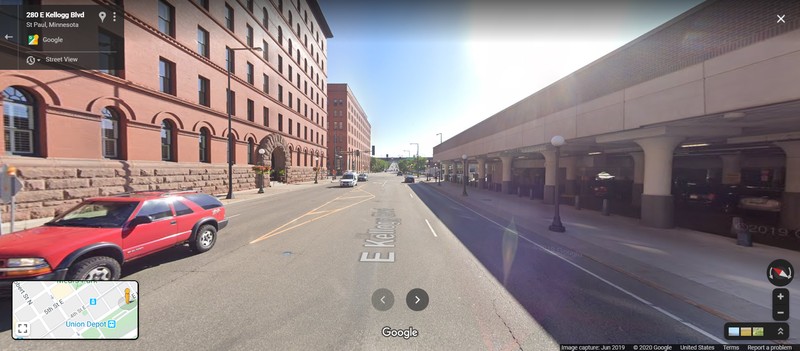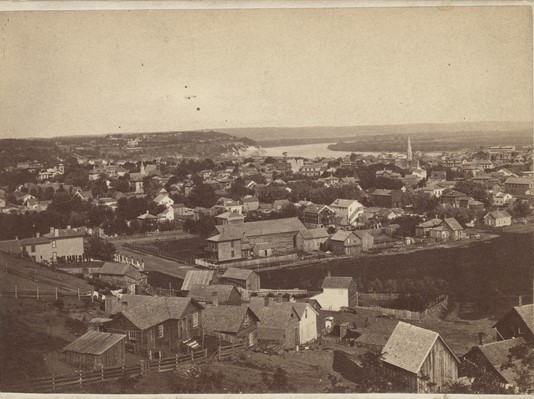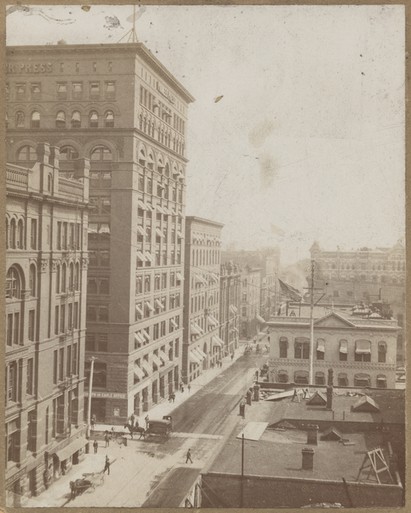Lowertown Goes Boom and Bust
Introduction
Text-to-speech Audio
Images
East Kellogg Boulevard

View of Lowertown from Capitol Hill (1865)

Lowertown at 4th and Robert (1898)

Backstory and Context
Text-to-speech Audio
Between the late 1840s and 1857 a massive wave of land speculation washed across the continent. That wave hit Lowertown hard.
A sixty-foot lot in Lowertown, purchased for $200 in 1847, was worth $6,000 eight years later. As one St. Paul historian said, "It was land for breakfast, land for dinner, and land for supper!"
In the 1850s St. Paul’s population exploded from 1,000 to 10,000 as American, European, and Canadian colonists flooded into the city. During the summer of 1857 alone, close to 500 newcomers a day arrived at the Lowertown Landing. Local lumber mills couldn't keep up with demand so boosters placed advisories in newspapers downriver. Newcomers began arriving with tents and camping out wherever they could until building materials became available.
During this period Lowertown also became a destination for "tourists, speculators, sporting men, and even worse characters.” Gangs like the Chicago Stars competed to add St. Paul to their criminal territory.
But in 1857 this boom went bust in a big way. The ship containing all of the gold that secured US currency sank to the bottom of the ocean during a storm, setting off a nationwide insurance and banking collapse that sent the American economy into a depression from which it did not fully recover until the 1880s.
All of the frenetic activity that built the first Lowertown slowed waaaaaay down. The criminals and speculators cleared out, having no further use "for the town that was essentially if not actually broke." Lowertown's wooden homes and storefronts fell victim to fire, rot, and weathering.
New residents began arriving at the landing in larger numbers again the 1870s. In the 1880s Lowertown transitioned from steamboat shipping to rail and business boomed again in the district. It was during this decade that local businesses and industries began erecting the large stone and brick structures that comprise much of the neighborhood today.
Cite This Entry
Dart, Danielle. "Lowertown Goes Boom and Bust." Clio: Your Guide to History. July 22, 2020. Accessed April 14, 2025. https://theclio.com/entry/109705
Sources
Millett, Larry . Lost Twin Cities. Saint Paul, MN. Minnesota Historical Society, 1992.
Wingerd, Mary Lethert . Claiming the City: Politics, Faith, and the Power of Place in St. Paul. Ithaca, NY. Cornell University Press, 2003.
Minnesota Historical Society
Minnesota Historical Society
Minnesota Historical Society

